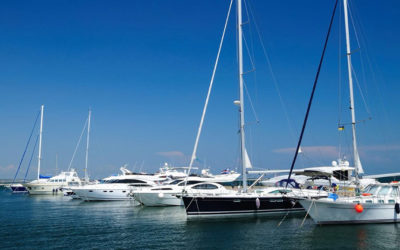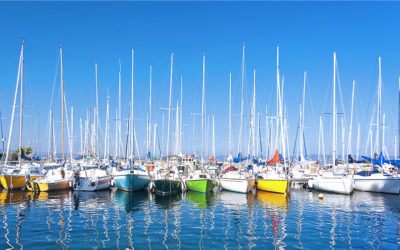Are you accustomed to sailing alone or with friends, but your children are yet to have the opportunity to see you at the helm? What are you waiting for? Band of Boats gives you advice for successful family sailing.
1. Thorough preparation for your sea voyage
Safety equipment is essential
Lifejackets (with CE Marking) must be appropriate for adults but, even more importantly, for children. Children should feel comfortable in the water in the event of a fall.
Safety harnesses and lanyards must be on their rack. Children unable to swim must be harnessed if entering the cockpit or going on deck. For even greater safety, do not hesitate to add nets secured between the guardwires and the stanchions.
The VHF radio must be perfectly operational. Test it by calling the port: “Radio check.”
The first-aid kit is essential on board to treat minor injuries and other unforeseen conditions.
You must have a complete set of safety equipment in accordance with the current type of sailing.
2. Think about protecting yourself properly
To protect yourself from the sun or the cold: hats, jumpers, woolly hats or caps must be available. Sun cream is also important for sea voyages, even on cloudy days. Sunburn can happen quickly!
Take a few games on board (cards, dice, books, etc.). Children will be happy to disconnect from time to time and return to their world.
Food to suit children must be available. Provide balanced meals that are simple, easy to prepare, eat, and digest. There must be sufficient fresh water on board.
3. Adapt your sailing
Before you set sail, remember to actively monitor the weather and how it is developing. This lets you anticipate the onset of wind, mist, or rain.
The first sailing trip should be short. Everyone is the same: adults, skippers, maritime professionals…we all need to “get our sea legs”. Allow children to become gradually accustomed to life on board.
The sailing distance for the first outings should also be appropriate. Children are often tired at the end of the day. It is not advisable to spend the night at an outer anchorage with children during their first few sailing trips.
Take advantage of this time with your children to show them your navigation instruments, the nautical chart of the sailing zone, how to use the toilet, etc.
They will be thrilled with all these discoveries. Many of them will want to get involved, and you will be pleasantly surprised.
4. Final checks before leaving
You’ve checked the weather again, and fair weather is forecast for today, tonight, and tomorrow. So we’re going out to sea.
The boat has been checked, the mooring lines have been doubled up in order to cast off more easily.
The Harbour Master’s office has been informed of our departure, with the name of the boat, number of persons on board, and the planned itinerary.
The briefing can begin: The lifejackets are put on and checked by the skipper.
The VHF radio is operating properly and older children can be taught how to use it. That could be useful. ‘Man overboard’ procedures must be mentioned, including recovery procedures.
The location of children on deck is important, especially for tricky manoeuvres.
Band of Boats advice:
- On a speedboat, avoid putting your children in the bow (risk of being ejected). They should be sheltered from the wind and sea spray.
- On a sailing boat, a stiff vang is highly recommended when handling the mainsail.
- For children who are prone to seasickness, keep them thoroughly occupied so that they enjoy the journey.
You have everything you need to make this first outing with your children a success. You’ll see: they will be begging to do it again!

